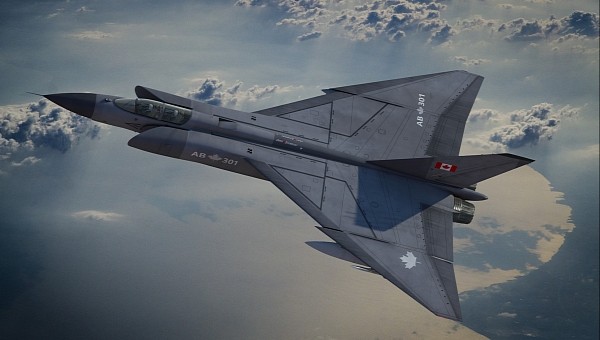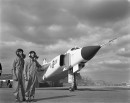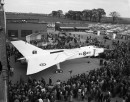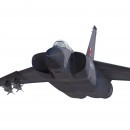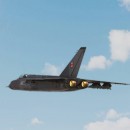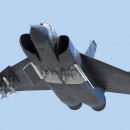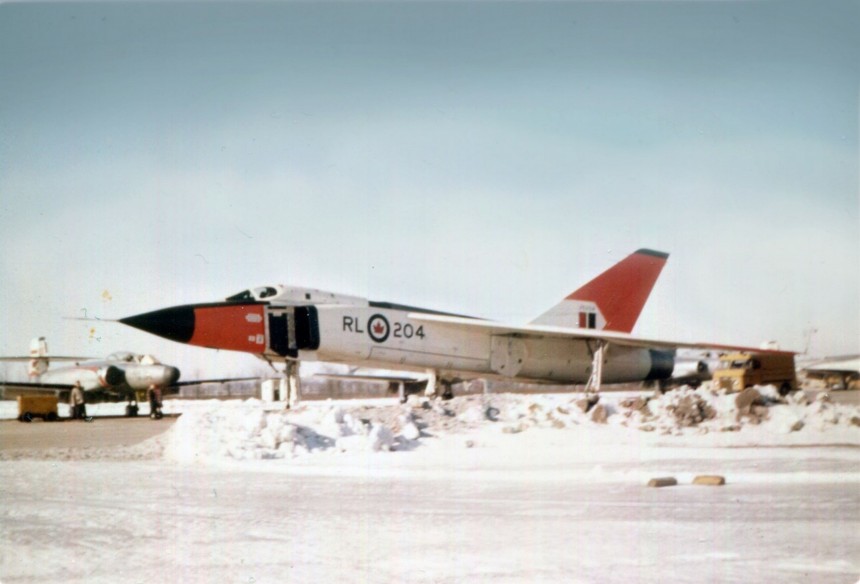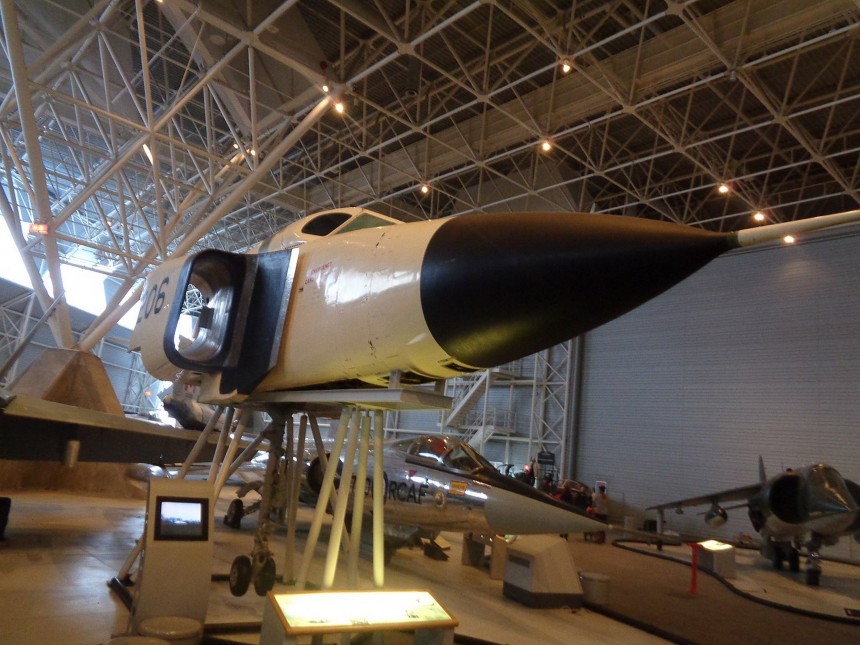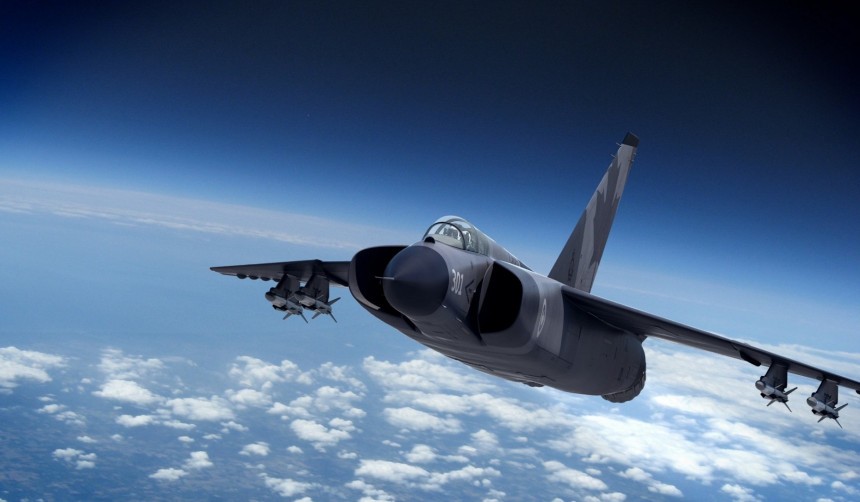With the possible exception of the F-15, no single jet fighter encompassed a nation's pride and ambitions in quite the same way the Avro CF-105 Arrow did. That's all the more notable because Canada's only domestically designed supersonic jet fighter never served a day with the RCAF. If anything, this only added to the legend.
Perhaps the fact the Avro Arrow never got to shoot down a Russian bomber was the key factor that led to its romanticization with the Canadian public. It's to the point that nearly 60 years after the Arrow's demise, a common belief the plane could tussle with fifth-gen fighters exists. Where's a GIF of John Cena asking, "are you sure about that?" when you need one?
But let's not judge too harshly yet. To understand why Canadian av-geeks can't get enough of hyping their hometown jet fighter, we need to understand why the Avro Arrow's cancelation hurt so badly. To do so, we need to go back to the cold, frosty morning of February 20th, 1959. Though an ordinary day by most measures, this day is called "Black Friday" in the Canadian aerospace sector.
This was the day the administration of the 13th Canadian Prime Minister John Diefenbaker decreed the CF-105 Arrow was no longer pertinent to the security of Canada as it was at the start of the project. As a result, over 14,500 Avro employees and 15,000 further workers in other parts of the Arrow supply chain were unceremoniously fired. All the special machine tools, paper blueprints, and any hardware related to the project were to be destroyed or burned as needed to fulfill the Prime Minister's orders.
To say Diefenbaker's ploy went over like spoiled milk in the hot sun with the Canadian public was nothing short of an understatement. To this day, Black Friday is the defining legacy of the entire Diefenbaker government even decades after his death. Some, even 60 years later, believe Diefenbaker had ulterior motives in grenading Canada's finest aerospace project. Claims the U.S. Air Force was so jealous of Canada's CF-105 that they muscled the Diefenbaker administration into buying American jets still permeate the modern-day discussion of the Arrow 60 years later.
It's to the point that some fairly dubious claims were laid at the feet of this now long-deceased warbird. Firstly, there's the claim that the CF-105 is better than contemporary NATO jets. At the more fanatical and extreme end of things, some even suggest the Arrow could kick the snot out of Canada's F-35 Lightning II. No really, people even rallied to try and make the RCAF back out of its deal with Lockheed Martin in favor of reviving a decades-old prototype.
Okay, buddy, let's take a timeout real quick. We're gonna need to see some receipts on that. Funnily enough, the receipt for someone actually endorsing this line of thinking comes from a video on the Canadian Global News YouTube Channel from a decade ago. In a segment from The West Block with Tom Clark, the case for reviving the CF-105 was presented by a native Canadian company called Bordeau Industries.
In their proposal, Bordeau declared a potential Avro Arrow airframe upgraded with the latest and greatest modern weaponry, sensor arrays, and avionics would meet or even exceed the strategic capability of non-VTOL F-35 variants serving with the RCAF. Claims that the Avro Arrow could not only fly faster and longer than a Lightning II while costing less overall in development, certainly sound enticing if you're tripping you-know-whats on weapons-grade nostalgia.
But, just for the sake of argument, let's look at a tale of the tape between the Arrow and the Lightning II to see what's what. For one thing, that news broadcast made it clear how much bigger the Arrow is in size than the F-35. Over 25 feet (7.62 m), separate the length of the Mk.1 Arrow and an F-35A. Such is the way things often are between a classic twin-engine interceptor and an ultra-modern, single-engine stealth fighter.
Had the Arrow made it to production, it would have sported two Orenda PS.13 Iroquois turbojet engines which, in their day, would have been among the most powerful jet engines in the world. With 25,600 lbs (113 kN) of thrust at full afterburner each at its disposal, it beats the F-35's Pratt & Whitney F-135-PW-100 turbofan's 43,000 lbs (191 kN) with afterburner.
Per Bordeau Industry's claims, if an F-35 and CF-105 took off from Vancouver, the Lightning II would have to stop for fuel in Winnipeg. Meanwhile, the Arrow could make it nearly the entire way to Toronto. All while flying almost 0.5 Mach faster than an F-35, which is out of steam at around Mach 1.6 officially. Couple that with an internal weapons bay and fly-by-wire controls similar to what modern fighter jets employ, and you can at least understand why one could assume the CF-105 wouldn't do too badly in a modern combat setting.
Except, it's not nearly as simple as Bordeau Industries made it out to be on Canadian national television. Allow us to explain why. It's all well and good that the Avro Arrow can theoretically fly circles around the F-35. But what good is any of that when every Chinese and Russian radar station tracks your big Canadian jet, glowing afterburners and all, from Moscow to Beijing?
Radar stealth is not something you can just retcon onto an existing series of airplanes. At least, if you want the stealth to be any good, that is. It needs to be meticulously and painstakingly integrated into every nook and cranny of a novel, bespoke airframe using modern stealth techniques like planform alignment. Wherein every flight surface and structure on the outer skin of a stealth fighter points at the same angle, deflecting radar beams away from tracking stations in the process.
To the untrained eye, the CF-105's internal weapon's bay looks an awful lot like the F-35's. But don't be fooled. Not housing weapons on external pylons aids the F-35's stealth capability, but it's by no means a deal breaker. Questions plagued the CF-105's development 60 years ago regarding if surface-to-air missile (SAM) technology had already caught up with the Arrow's Mach 2.5-ish capable airframe.
Against modern Russian SAM hardware like the S-400 or the Chinese DK-10 Sky Dragon, there's no telling how such an old-school, point-and-shoot style interceptor would fare. It's entirely possible that Russian SAM capabilities are largely overinflated by propaganda. But It's for the best we don't find out by sending a screaming metal hot rod flying over Russian air space and seeing what happens.
It's also pretty dubious to assume the CF-105 would be very good in a dogfight against modern MiGs and Sukhois deployed over Ukraine at the moment. The Arrow may very well have maneuvered beautifully for an interceptor its size and age. But modern fighter maneuverability makes jets like the Sukhoi Su-27 and MiG-29 maneuver like stunt planes a fraction of their size.
So to speak, unless the Arrow's managed to down enemy threats with Velvet Glove or modern Python missiles at beyond-visual-range (BVR), chances are good the CF-105's goose would be cooked in a modern battle. Heck, even McDonnell-Douglas F-4 Phantoms and Saab J35 Drakens were pegged as having better overall flight performance than the Avro Arrow less than a decade after the Canadian government canned the latter project.
Sadly to say, it's possible that had the Arrow entered service, it would have aged very unlike fine wine. Surface-to-air missiles were the bane of airplanes far more successful and costly than the Arrow over Vietnam. There's no reason why the CF-105 would be any different. Even if a CF-105 airframe could be constructed from blueprints defiantly saved from destruction decades ago, fitting it with AESA radar, thrust vectoring, and modern avionics like Bordeau proposed isn't like LS-swapping your car.
Though we'll probably never know for certain, it's fair to say these were the reasons the RCAF opted to fly American aircraft instead for the rest of history. It's no doubt unfortunate. The Arrow project was a symbol of national pride that brought high-quality jobs to tens of thousands of Canadians and even a handful of Americans. But if nothing else, the advancements made in aeronautics on the CF-105 project still have a direct impact on the gen-V fighters being built today.
From that perspective, the Avro Arrow was nothing short of a rousing success. With February being the anniversary month of Black Friday, we can think of no better silver lining.
But let's not judge too harshly yet. To understand why Canadian av-geeks can't get enough of hyping their hometown jet fighter, we need to understand why the Avro Arrow's cancelation hurt so badly. To do so, we need to go back to the cold, frosty morning of February 20th, 1959. Though an ordinary day by most measures, this day is called "Black Friday" in the Canadian aerospace sector.
This was the day the administration of the 13th Canadian Prime Minister John Diefenbaker decreed the CF-105 Arrow was no longer pertinent to the security of Canada as it was at the start of the project. As a result, over 14,500 Avro employees and 15,000 further workers in other parts of the Arrow supply chain were unceremoniously fired. All the special machine tools, paper blueprints, and any hardware related to the project were to be destroyed or burned as needed to fulfill the Prime Minister's orders.
To say Diefenbaker's ploy went over like spoiled milk in the hot sun with the Canadian public was nothing short of an understatement. To this day, Black Friday is the defining legacy of the entire Diefenbaker government even decades after his death. Some, even 60 years later, believe Diefenbaker had ulterior motives in grenading Canada's finest aerospace project. Claims the U.S. Air Force was so jealous of Canada's CF-105 that they muscled the Diefenbaker administration into buying American jets still permeate the modern-day discussion of the Arrow 60 years later.
Okay, buddy, let's take a timeout real quick. We're gonna need to see some receipts on that. Funnily enough, the receipt for someone actually endorsing this line of thinking comes from a video on the Canadian Global News YouTube Channel from a decade ago. In a segment from The West Block with Tom Clark, the case for reviving the CF-105 was presented by a native Canadian company called Bordeau Industries.
In their proposal, Bordeau declared a potential Avro Arrow airframe upgraded with the latest and greatest modern weaponry, sensor arrays, and avionics would meet or even exceed the strategic capability of non-VTOL F-35 variants serving with the RCAF. Claims that the Avro Arrow could not only fly faster and longer than a Lightning II while costing less overall in development, certainly sound enticing if you're tripping you-know-whats on weapons-grade nostalgia.
But, just for the sake of argument, let's look at a tale of the tape between the Arrow and the Lightning II to see what's what. For one thing, that news broadcast made it clear how much bigger the Arrow is in size than the F-35. Over 25 feet (7.62 m), separate the length of the Mk.1 Arrow and an F-35A. Such is the way things often are between a classic twin-engine interceptor and an ultra-modern, single-engine stealth fighter.
Per Bordeau Industry's claims, if an F-35 and CF-105 took off from Vancouver, the Lightning II would have to stop for fuel in Winnipeg. Meanwhile, the Arrow could make it nearly the entire way to Toronto. All while flying almost 0.5 Mach faster than an F-35, which is out of steam at around Mach 1.6 officially. Couple that with an internal weapons bay and fly-by-wire controls similar to what modern fighter jets employ, and you can at least understand why one could assume the CF-105 wouldn't do too badly in a modern combat setting.
Except, it's not nearly as simple as Bordeau Industries made it out to be on Canadian national television. Allow us to explain why. It's all well and good that the Avro Arrow can theoretically fly circles around the F-35. But what good is any of that when every Chinese and Russian radar station tracks your big Canadian jet, glowing afterburners and all, from Moscow to Beijing?
Radar stealth is not something you can just retcon onto an existing series of airplanes. At least, if you want the stealth to be any good, that is. It needs to be meticulously and painstakingly integrated into every nook and cranny of a novel, bespoke airframe using modern stealth techniques like planform alignment. Wherein every flight surface and structure on the outer skin of a stealth fighter points at the same angle, deflecting radar beams away from tracking stations in the process.
Against modern Russian SAM hardware like the S-400 or the Chinese DK-10 Sky Dragon, there's no telling how such an old-school, point-and-shoot style interceptor would fare. It's entirely possible that Russian SAM capabilities are largely overinflated by propaganda. But It's for the best we don't find out by sending a screaming metal hot rod flying over Russian air space and seeing what happens.
It's also pretty dubious to assume the CF-105 would be very good in a dogfight against modern MiGs and Sukhois deployed over Ukraine at the moment. The Arrow may very well have maneuvered beautifully for an interceptor its size and age. But modern fighter maneuverability makes jets like the Sukhoi Su-27 and MiG-29 maneuver like stunt planes a fraction of their size.
So to speak, unless the Arrow's managed to down enemy threats with Velvet Glove or modern Python missiles at beyond-visual-range (BVR), chances are good the CF-105's goose would be cooked in a modern battle. Heck, even McDonnell-Douglas F-4 Phantoms and Saab J35 Drakens were pegged as having better overall flight performance than the Avro Arrow less than a decade after the Canadian government canned the latter project.
Though we'll probably never know for certain, it's fair to say these were the reasons the RCAF opted to fly American aircraft instead for the rest of history. It's no doubt unfortunate. The Arrow project was a symbol of national pride that brought high-quality jobs to tens of thousands of Canadians and even a handful of Americans. But if nothing else, the advancements made in aeronautics on the CF-105 project still have a direct impact on the gen-V fighters being built today.
From that perspective, the Avro Arrow was nothing short of a rousing success. With February being the anniversary month of Black Friday, we can think of no better silver lining.
